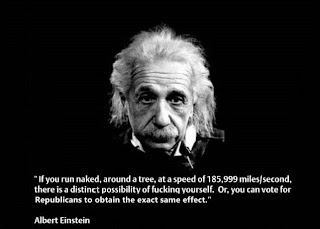Columnist Pete McMartin
Photograph by: Ian Lindsay, Vancouver Sun
David Berner is 69, and still swimming upstream.
One of these days, the current may turn in his favour.
It
hasn’t yet. It won’t soon. But Berner, whose resumé includes actor,
talk show host and drug addiction counsellor, has never wavered from his
belief:
He is vehemently against the prevailing practice of harm reduction.
Not only does he not see it reducing harm, he believes it encourages and nourishes drug addiction.
“There’s
a giant emperor’s new clothes,” Berner said, “and it’s called ‘harm
reduction.’ And it not only has political sway these days, it’s pretty
well the accepted wisdom of our time. It’s taught in universities, and
governments all over the world sing to this tune.
“So needle
exchanges, Insite, free crack pipe kits, shot glasses of whiskey to
so-called chronic alcoholics ... those kinds of things are anathema to
us.”
“Us” is the Drug Prevention Network of Canada, of which
Berner is executive director. The Network was founded in 2006 by former
B.C. Conservative MP Randy White, whose own brand of politics was
famously incendiary. One of his more notable utterances — “to heck with
the courts,” his solution to overturning same-sex marriage law — has
been cited as one of the reasons the Conservatives lost the 2004 federal
election.
Berner came to his views on drugs through more liberal
and practical routes. He was with the Company of Young Canadians in the
1960s when he founded the X-Kalay Foundation Society, a residential
treatment centre for addicts and alcoholics.
Berner was 24.
“They
[the CYC] put up no money other than giving me $235 a month as a
salary. Me and two aboriginal guys from the B.C. Pen put $130 of our own
money on a table and rented a house at Fifth and Macdonald. We had no
idea what we were doing and just through accident and hard work and the
tenor of the times it took off. And four years later, there were 125
people in residence. And then we duplicated it in Manitoba.” [The
Manitoba chapter has since been renamed the Behavioural Health
Foundation, and is still in operation.]
Berner’s treatment
philosophy, formed through trial and error, was one of tough love.
Violence was not tolerated. Drugs were not tolerated. Backsliding was
not tolerated. Break any of the rules and you were gone.
“When I
started doing this work, I would say there was more of a sense of
containment here. But in 1967, there were very few options for an
addict. You could continue to do heroin. You could OD. You could go to
prison.”
But about 30 years ago, Berner said, there was a sea
change in sociology. A dark side to the expansion of civil liberties
began to be felt.
“Suddenly, it was not only okay for people to live lives of misery, but there were people who said, ‘We’re going to help you.’
“Now,
for addicts, for people who are lousy at choice-making, there are
thousands of choices. There are dozens and dozens of recovery centres,
of detox centres, Insite, needle exchanges. Everybody and their aunt are
trying to help you.”
And while harm reductionists would claim
that the services they provide are humanitarian and meant to save lives,
Berner said, they don’t question the consequences.
“They say,
‘I’m going to give you a clean place to shoot up, but I’m not going to
ask you where you got your drugs, or how you got the money to pay for
your drugs or what you’re going to do after you’ve shot up here.’ And
what they do after they’ve shot up is break into your car to feed their
habit.”
The result, Berner said, is that they ultimately harm
everyone — themselves, since they remain addicted and continue to live
in misery, the people and family members around them, and society at
large, since they feed crime while draining away valuable government
resources.
And the proof of this futility, to Berner, is the
Downtown Eastside. Hundreds of social welfare agencies and hundreds of
millions of dollars have failed to eradicate or even lessen the problems
of addiction.
Yet politicians and academics, Berner said,
continue to be seduced by the arguments for harm reduction “because it
sounds clever and smart.” Those politicians and academics, though, he
said, haven’t been grounded in the dirty practicalities of addiction.
“There
will never be enough for addicts because addicts always want more. So
the question is, do we put our resources into harm reduction or do we
put our resources to help people get clean?
“The first thing I
would do if I was elected mayor? I would stop the flow of a million
dollars a day to the hundreds of social welfare agencies. I would just
stop it.
“The second thing I would do is, I would not have people
asking, ‘Can I give you a clean needle?’ but I would have people going
down there and saying, ‘Let’s get you clean. Let’s leave this life
behind.’
“But the context now is, harm reduction has become so pervasive a reality, it’s really part of the culture now.
“But it’s a big giving-up. It’s a big shrug of the shoulders.”
pmcmartin@vancouversun.com
© Copyright (c) The Vancouver Sun












